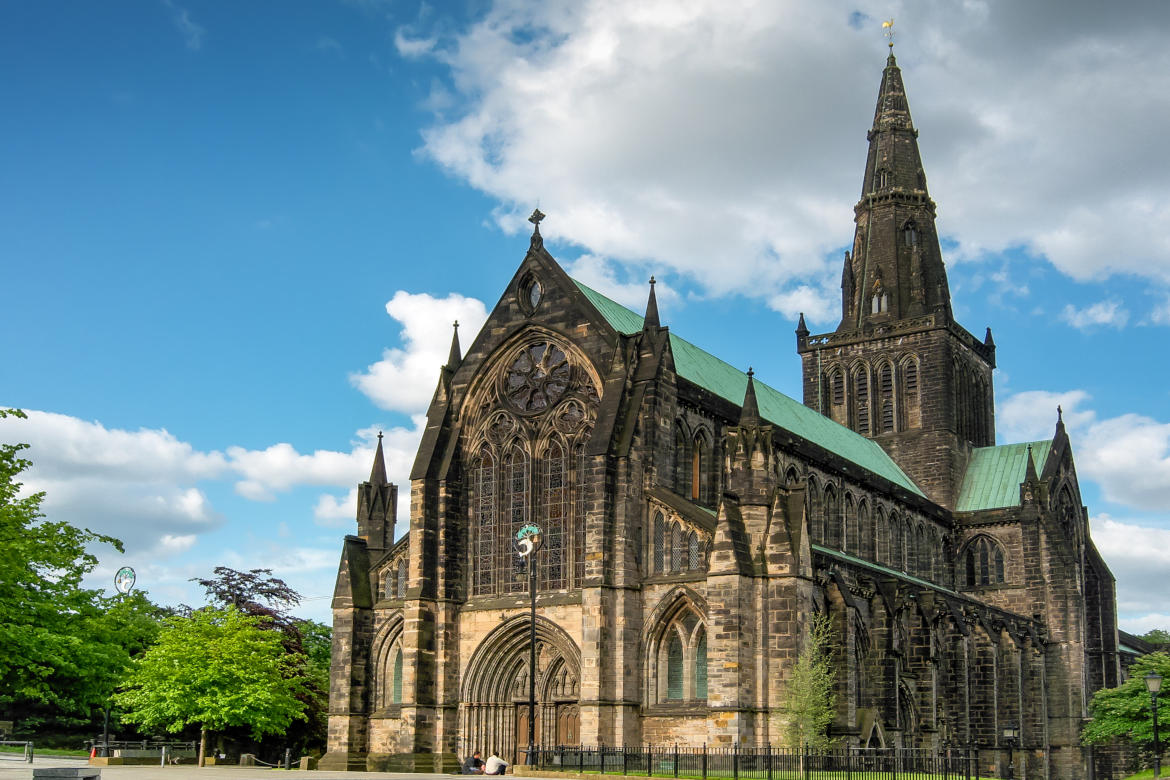St. Mungo’s Cathedral, an awe-inspiring Gothic masterpiece, is the oldest surviving cathedral on mainland Scotland and the oldest building in Glasgow.
This remarkable structure, also known as Glasgow Cathedral, has stood for more than 800 years, withstanding the upheavals of history while remaining a place of worship. Its well-preserved medieval architecture provides a rare insight into Scotland’s religious and architectural traditions.
Table of Contents
Glasgow’s Medieval Past
The origins of St. Mungo’s Cathedral date back to the 12th century when it was dedicated to St. Mungo, the city’s patron saint. St. Mungo, also known as Kentigern, was a 6th-century missionary who is believed to have founded a religious community on the site.
Over the centuries, the cathedral became a central part of Glasgow, growing in prominence alongside the city itself. The construction of the current cathedral began in the early 13th century, replacing an earlier wooden church.
Built in the Gothic style, it was designed to be both a place of worship and a symbol of the growing influence of the medieval Scottish church. In the mid-1200s, the crypt was constructed to house the tomb of St. Mungo (St. Kentigern), further solidifying the cathedral’s status as a sacred site.
Despite the turbulence of the Reformation in the 16th century – when many religious buildings in Scotland were destroyed – St. Mungo’s Cathedral was spared, largely due to its continued use as a place of Presbyterian worship.
This remarkable survival makes it one of the most important ecclesiastical structures in Scotland today. The building has witnessed centuries of change, yet it remains one of the few Scottish medieval cathedrals to have survived the Reformation almost entirely intact.
Beyond St. Mungo’s Cathedral, Glasgow is home to several other historic buildings that have endured for centuries. The list below highlights five of the city’s oldest structures, each with its own unique historical and architectural significance.
The Five Oldest Buildings in Glasgow
| Building Name | Construction Date | Description |
|---|---|---|
| St. Mungo’s Cathedral | 12th century | Serving as the seat of the Archbishop of Glasgow until the Reformation, it remains a rare and remarkably well-preserved example of medieval Scottish architecture. |
| Provand’s Lordship | 15th century | Built in 1471, Provand’s Lordship is Glasgow’s oldest surviving townhouse. Originally part of St. Nicholas’s Hospital, it now operates as a museum, offering visitors a glimpse into domestic life in medieval Scotland. |
| St. Andrew’s in the Square | 18th century | Completed in 1756, this elegant Georgian church stands as one of Glasgow’s finest examples of classical architecture. No longer used for worship, it has been repurposed as a cultural venue celebrating Scotland’s rich artistic heritage. |
| St. Andrew’s-by-the-Green | 1751/2 | As the first Episcopalian church built in Scotland after the Reformation, St. Andrew’s-by-the-Green holds a unique place in Glasgow’s religious history. Its symmetrical classical design reflects the architectural elegance of the era. |
| Trades Hall of Glasgow | 1794 | Designed by the renowned architect Robert Adam, this grand structure has served as the headquarters of Glasgow’s craft guilds for over two centuries. It remains an enduring symbol of the city’s historic trades and mercantile legacy. |
While all these buildings contribute to Glasgow’s architectural heritage, St. Mungo’s Cathedral remains the most iconic – not only for its age but for its striking Gothic design.
The Architectural Design of St. Mungo’s Cathedral
St. Mungo’s Cathedral is one of the finest examples of Gothic architecture in Scotland. The building features pointed arches, ribbed vaults, and towering spires that create a dramatic and imposing silhouette against the Glasgow skyline. The structure is made primarily of sandstone, which has weathered beautifully over the centuries, giving it a dark, atmospheric appearance.
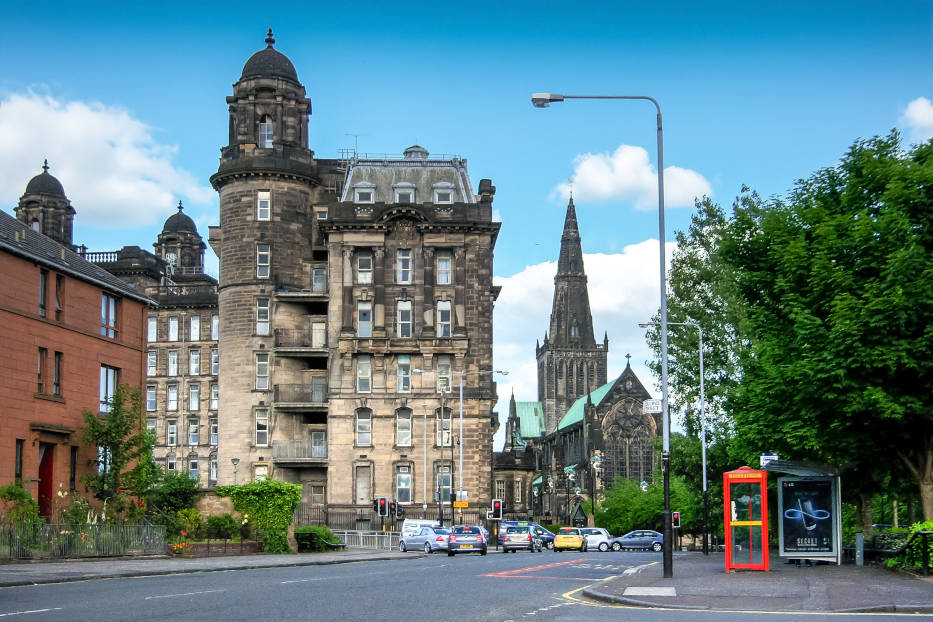
One of the cathedral’s most striking features is its stunning stained-glass windows. Although many medieval windows were lost over time, the modern stained glass—particularly the post-war additions—adds an incredible spectrum of color to the interior, casting vibrant reflections across the stone walls.
The windows depict biblical scenes, saints, and intricate geometric patterns, contributing to the cathedral’s sacred ambiance. Inside, visitors can admire the breathtaking high altar and the intricately carved wooden choir stalls.
The vaulted ceiling soars above, showcasing the craftsmanship of medieval masons who painstakingly constructed the cathedral without modern technology. The crypt, one of the oldest parts of the building, houses the tomb of St. Mungo, drawing pilgrims and history enthusiasts alike. The crypt’s stone columns and dim lighting create a solemn, reverential atmosphere, reminding visitors of its long-standing spiritual significance.
Another notable feature is the Blackadder Aisle, named after Archbishop Robert Blackadder, who oversaw renovations in the late 15th century. This area of the cathedral reflects the later stages of medieval architecture, demonstrating how the building evolved over time while still maintaining its early Gothic character.
Exploring the Cathedral and Its Surroundings
Beyond its religious and architectural significance, St. Mungo’s Cathedral serves as a cultural landmark within the city. It is located next to the hauntingly beautiful Glasgow Necropolis, a Victorian cemetery filled with elaborate tombs and monuments.
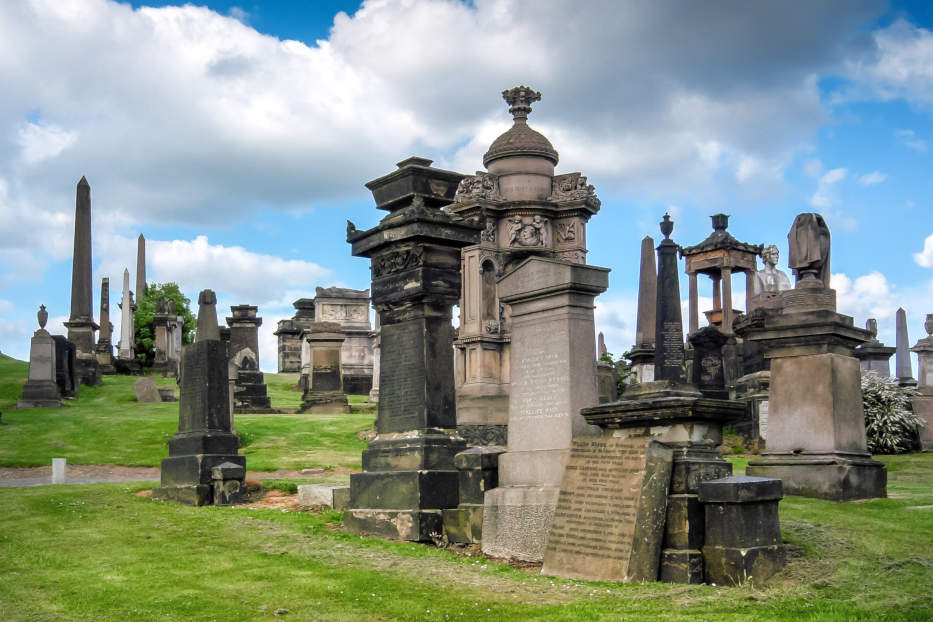
A walk through the Necropolis offers stunning views of the cathedral and provides a deeper sense of Glasgow’s historical and architectural character. The cemetery, modeled after Paris’s Père Lachaise, contains the final resting places of many prominent Glaswegians, adding to the area’s historical depth.
Visitors can also explore the nearby St. Mungo Museum of Religious Life and Art, which provides insight into different faiths and the role of religion throughout history.
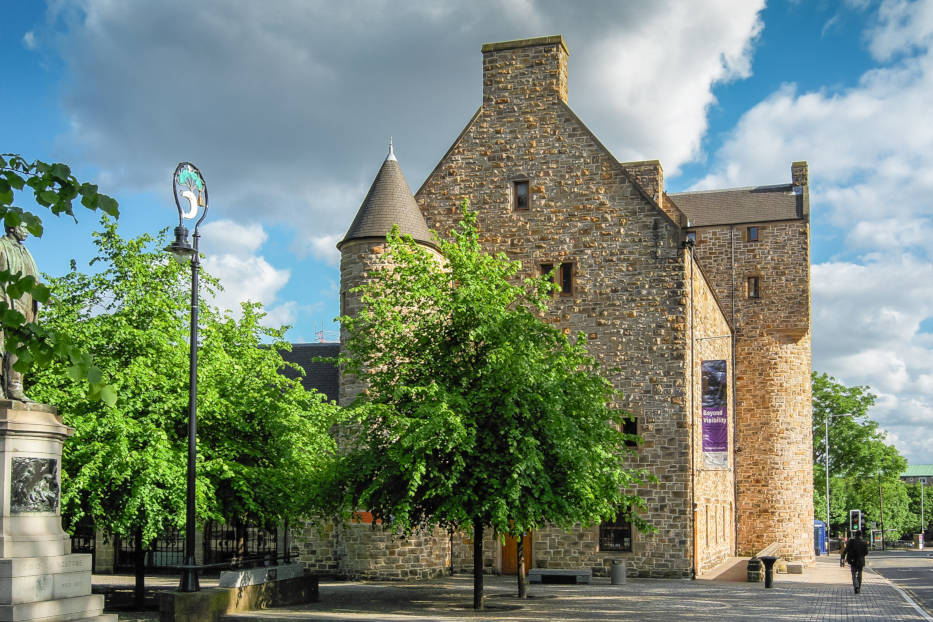
The museum complements the cathedral experience, giving context to Glasgow’s spiritual past and its enduring traditions. Interactive exhibits and thought-provoking displays encourage visitors to reflect on the diverse religious practices that have shaped Scotland and the wider world.
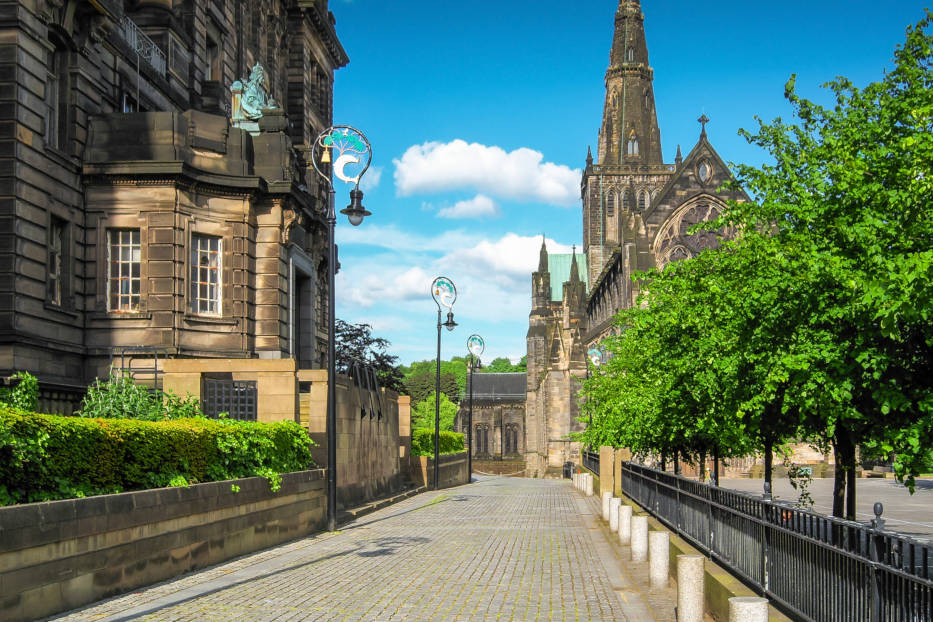
For those interested in medieval history, the cathedral’s location also provides access to some of Glasgow’s oldest streets. The surrounding area, known as the Cathedral Precinct, was once the heart of the medieval city. Traces of this past remain in street names, old buildings, and remnants of the city’s early defenses, offering a deeper look into Glasgow’s historical evolution.
